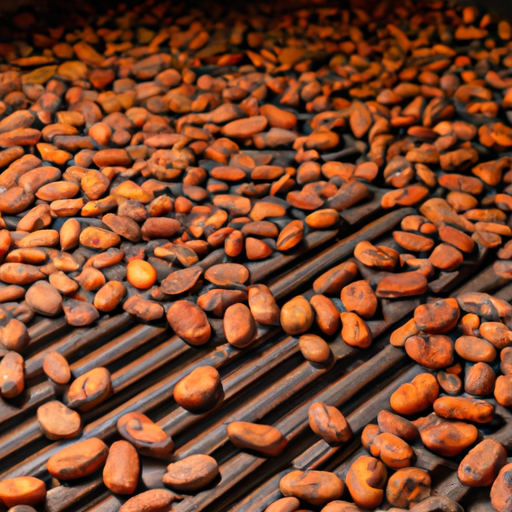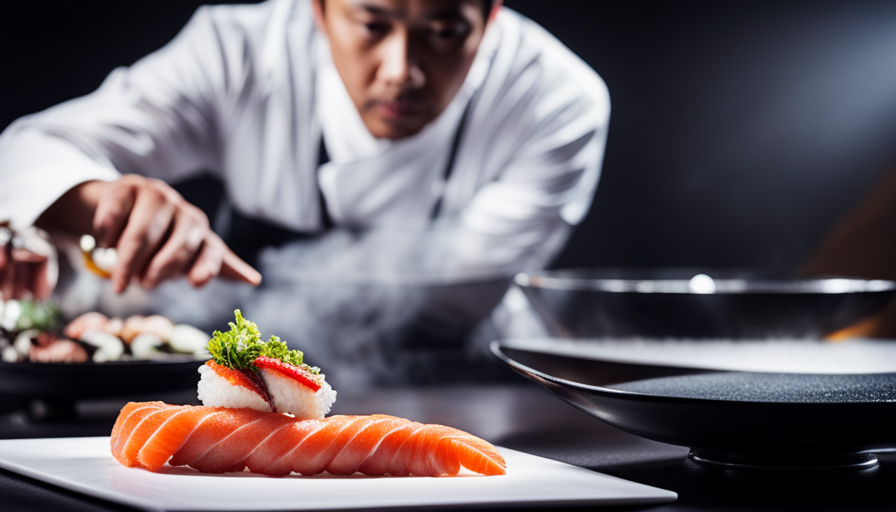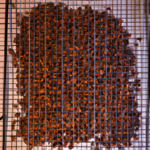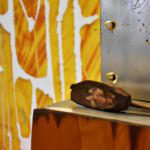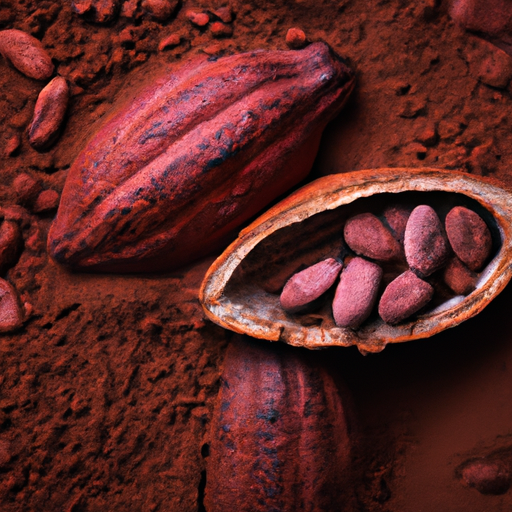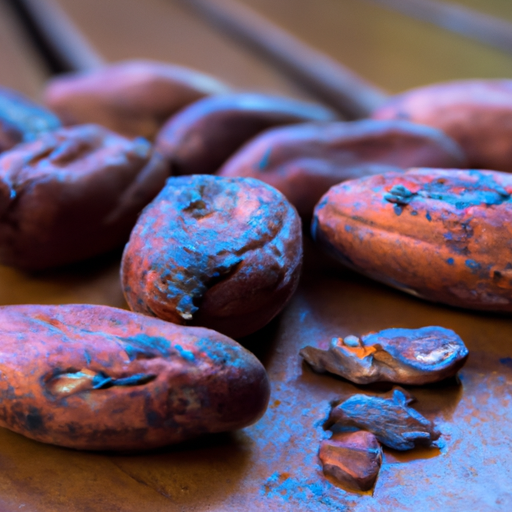As I enter my kitchen, the delicious scent of rich chocolate fills the air. The oven is heating up, prepared to transform the raw cacao beans I have chosen. Today, I will demonstrate the process of roasting these simple beans to reveal their true flavors. We will go on a journey from the natural, earthy aroma of the beans to the luxurious, velvety pleasure of homemade roasted cacao.
In this article, I will guide you through the process step by step, sharing my secrets for achieving the perfect roast. We will start by selecting the right cacao beans, ensuring that we have the best quality ingredients.
Then, we’ll prepare the beans, spread them on a baking sheet, and let the oven work its magic. I’ll teach you how to check for doneness and remove the bean shells, before finally grinding the roasted cacao beans to use in your favorite recipes.
So, let’s dive in and embark on this delicious adventure together. Get ready to experience the sublime taste of homemade roasted cacao!
Key Takeaways
- Roasting raw cacao beans in the oven is a common method for intensifying flavor and aroma.
- The process involves preheating the oven to a specific temperature and spreading the raw cacao beans evenly on a baking sheet.
- The beans should be roasted for a specific amount of time, checking periodically for even roasting.
- Once done, the roasted cacao beans should have a dark brown color and rich aroma. They should be allowed to cool before using or storing in an airtight container for freshness.
Selecting the Right Cacao Beans
To ensure the best flavor and quality, you should carefully choose the cacao beans that have a rich aroma and are free from any signs of mold or damage. There are different types of cacao beans available, such as criollo, forastero, and trinitario. Each type has its own unique flavor profile, so it’s important to consider your preference.
Once you have selected the perfect beans, it’s crucial to store them properly to maintain their freshness. Keep them in a cool, dry place in an airtight container to prevent moisture and odors from affecting their taste. Proper storage will help preserve the beans’ natural flavors and aromas.
Now that you have chosen the best cacao beans and stored them correctly, it’s time to prepare them for roasting.
Preparing the Beans for Roasting
First, carefully handle the cacao beans, ensuring they are clean and ready for roasting. Lay them out on a clean, dry surface and inspect for any dirt or debris. If necessary, rinse them gently with water and pat dry with a towel.
Next, prepare the beans for roasting by allowing them to dry properly. Spread them out on a tray or baking sheet and place in a well-ventilated area for a few days. Stir the beans occasionally to ensure even drying. Consider using fermentation techniques to enhance flavor.
Once the beans are dry and fermented, it’s time to preheat the oven for roasting.
Preheating the Oven
Now is the time to ensure the oven is nice and hot, ready for the next crucial step in the chocolate-making process. Here are some tips for preheating your oven to guarantee the best results for roasting your raw cacao beans:
- Set the oven to the recommended temperature, usually around 250°F (121°C), for even heat distribution.
- Give the oven enough time to reach the desired temperature, typically 15-20 minutes, to avoid uneven roasting.
- Place an oven thermometer inside to double-check the accuracy of the temperature settings.
- Avoid opening the oven door frequently during preheating to maintain a consistent temperature.
Common mistakes to avoid when preheating the oven include setting the temperature too high or not giving it enough time to reach the desired heat.
Once the oven is properly preheated, it’s time to spread the beans on a baking sheet and begin the roasting process.
Spreading the Beans on a Baking Sheet
After preheating, simply spread the cacao beans evenly on a baking sheet to ensure even heat distribution during the roasting process, resulting in a rich and aromatic chocolate. Did you know that a standard baking sheet can hold around 2 cups of cacao beans? By spreading the beans evenly, you allow each bean to roast uniformly, enhancing the flavor and texture of the final product. To make it easier for you, here’s a table that shows the recommended amount of cacao beans for different baking sheet sizes:
| Baking Sheet Size | Recommended Amount of Cacao Beans |
|---|---|
| Small | 1 cup |
| Medium | 2 cups |
| Large | 3 cups |
| Extra Large | 4 cups |
Remember, adjusting the baking time is key to achieving different flavor profiles. Once the beans are evenly spread, we can move on to roasting them at the proper temperature for a truly delicious treat.
Roasting the Beans at the Proper Temperature
To achieve a truly delectable treat, it is essential to ensure that the cacao beans are carefully roasted at the appropriate temperature. Roasting the beans at the proper temperature is crucial for flavor development and achieving the desired taste.
The ideal temperature for roasting raw cacao beans in the oven is around 250-275 degrees Fahrenheit. This temperature allows for the beans to gradually heat up and fully develop their flavors without burning.
It is important to note that the roasting time may vary depending on the size and type of beans, but generally, it takes about 20-30 minutes. As the beans roast, they will release a rich aroma and turn a slightly darker shade. This is a sign that the roasting process is progressing well.
Once the beans are properly roasted, we can move on to the next step of checking the beans for doneness and ensuring they are ready to be processed into delicious chocolate delights.
Checking the Beans for Doneness
Let’s take a moment to check if the beans are perfectly cooked and ready for the next step.
Evaluating the doneness of the roasted cacao beans is crucial in determining the desired roast level. To do this, simply take a few beans and break them open. They should have a deep brown color throughout.
If the beans appear too pale, they may need more time in the oven. On the other hand, if they are too dark or even black, they may be over-roasted.
Additionally, pay attention to the aroma. The beans should have a rich, chocolatey smell without any burnt or smoky notes.
Once the beans are evaluated and deemed perfectly roasted, we can move on to the subsequent section about cooling and removing the bean shells.
Cooling and Removing the Bean Shells
Now, you’re ready to cool the roasted cacao beans and remove their shells, revealing the delicious chocolatey goodness inside.
To cool the beans, you can try several techniques. One method is to spread the beans out on a baking sheet and let them cool at room temperature for about 15 minutes.
Another option is to place the beans in the refrigerator for a quicker cool-down. Alternatively, you can use a fan to blow air over the beans, speeding up the cooling process.
Once the beans have cooled, it’s time to remove the shells. You can do this by gently cracking the beans with your hands or using a mortar and pestle to lightly crush them. The shells should come off easily, leaving you with the roasted cacao nibs.
Now, let’s move on to the next step of grinding the roasted cacao beans.
Grinding the Roasted Cacao Beans
After cooling and removing the bean shells, it’s time to grind the roasted cacao beans into a smooth and velvety consistency. This step is crucial in unlocking the rich flavors and aromas hidden within the beans.
There are various grinding techniques you can use, depending on the equipment you have available. One popular method is using a mortar and pestle to manually grind the beans until they reach the desired texture. Alternatively, you can also use a food processor or a high-quality grinder specifically designed for cacao beans.
Experimenting with different grinding techniques can help you achieve unique flavor profiles, as the texture of the ground cacao can impact the overall taste of your recipes.
Once you have ground the beans to your liking, you can proceed to use your homemade roasted cacao in a variety of delicious recipes, from decadent chocolate desserts to flavorful cocoa drinks.
Using Your Homemade Roasted Cacao in Recipes
Once you’ve ground your homemade roasted cacao to perfection, the possibilities for incorporating its rich flavors into an array of delightful recipes are endless.
One way to use roasted cacao is as a topping. Sprinkle it over your favorite desserts like ice cream, yogurt, or even pancakes for an added burst of chocolatey goodness. The roasted cacao adds a slightly bitter and intense flavor that perfectly complements the sweetness of these treats.
Another way to incorporate roasted cacao into your recipes is by adding it to beverages. Whether you’re a fan of hot chocolate, smoothies, or even coffee, a sprinkle of roasted cacao can take your drink to the next level. It adds depth and complexity to the flavor profile, making every sip more enjoyable.
You can also experiment with different combinations, like adding roasted cacao to a milkshake or a homemade chocolate martini. The options are truly endless when it comes to using your homemade roasted cacao in recipes. Get creative and indulge in the delicious flavors it has to offer.
Frequently Asked Questions
Can I use any type of cacao beans for roasting?
Yes, you can use different types of cacao beans for roasting. Each variety has its own unique flavor profile, so experimenting with different roasting techniques can enhance the taste and aroma of your chocolate.
How long should I preheat the oven before roasting the cacao beans?
Preheating time for roasting cacao beans in the oven depends on the desired temperature. To achieve optimal roasting, preheat the oven for about 10 minutes at 250°F.
Can I roast the cacao beans without removing the bean shells?
Roasting cacao beans with their shells intact is possible, but removing the shells has its benefits. Roasting with shells preserves the bean’s natural flavors, while removing them allows for a smoother texture and enhances the overall taste of the chocolate.
What is the best way to grind the roasted cacao beans?
To grind roasted cacao beans, the best technique is to use a grinder or food processor. These methods ensure a fine and consistent texture for your cacao. Additionally, ground cacao can be used in various recipes, like smoothies or baked goods. Remember, "The proof is in the pudding!"
Can I use the homemade roasted cacao in savory recipes as well?
Yes, you can definitely use homemade roasted cacao in savory recipes as well. It adds a unique depth of flavor and can be used in dishes as a garnish or even incorporated into sauces and marinades.
Can I Roast Raw Cacao Beans in the Oven for Preparation?
Yes, you can roast raw cacao beans in the oven for preparation. Simply spread the beans on a baking sheet and roast at 250°F for 10-15 minutes, stirring occasionally. This process enhances the flavor and aroma of the raw cacao beans, perfect for raw cacao bean preparation.
Conclusion
In conclusion, roasting your own cacao beans in the oven is a simple and rewarding process. By following the steps outlined in this article, you can create delicious homemade roasted cacao that can be used in a variety of recipes.
While it may seem daunting at first, with a little practice and patience, you’ll be able to perfect your roasting technique. Don’t let the fear of the unknown hold you back from experiencing the rich and intense flavors that come from roasting your own cacao beans.
Give it a try and elevate your chocolate creations to a whole new level!

